NSF Awards: 1908743
In Spring 2020, when schools were forced to close, many students lost the opportunity for hands-on STEM learning. Ed+gineering, an NSF-funded collaboration between education and engineering faculty and students, shares how it adapted engineering lessons for online implementation. Teams of education and engineering students from Old Dominion University partnered with 5th graders from the Academy for Discovery at Lakewood, a public school in Norfolk, Virginia. Over the course of five Zoom sessions, the teams designed, built, and coded bio-inspired robots that could address a global challenge.
Ed+gineering partners education and engineering students at three points in their preparation programs to teach engineering lessons to elementary school students. This video highlights Collaboration 2, where education students in an educational technology course were paired with engineering students in an electro-mechanical systems course. Prior to COVID, the teams met at a local school during their class time and were joined by 5th graders in an after-school technology club. When COVID forced schools to close, the collaboration went virtual. This video showcases the experience of one education student, one engineering student, and one 5th grader, known as Team Dolphin, as they collaborated via Zoom to engineer dolphin-inspired robots that could remove trash from our oceans.
The team faced many challenges teaching robotics over Zoom, such as helping the elementary school student connect robotic components and troubleshoot. But, there were also benefits. We found that providing each participant with their own robotics kit allowed them extra time to practice with the materials. Asking each team member to build their own robot helped develop confidence. The intimate setting of the Zoom sessions inspired the team members to develop strong bonds. The added autonomy and responsibility for the education student who was hosting and structuring the Zoom sessions may have helped motivate her to invest more time learning the material and preparing for the sessions. What started as a quick fix to a challenging problem ended as a powerful and memorable learning experience for all.







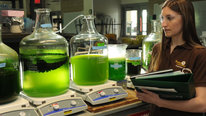
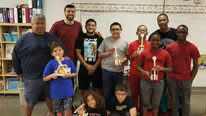
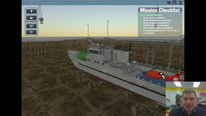
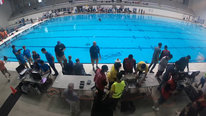

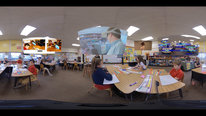
Jennifer Kidd
Master Lecturer
Welcome to the Ed+gineering Project! In our video you will see an inside view of "Team Dolphin's" struggles and triumphs as they collaborated via Zoom to design, build, and code bio-inspired robots that could address a global challenge. Team Dolphin included a 5th grader, a preservice teacher, and an undergraduate engineering student. One of the most exciting epiphanies I've had working on this project in the last year during the pandemic is how important the relationships between the students are in terms of their overall experience. With so many factors working against us (e.g. Zoom fatigue, shoddy Internet connections, camera-shy students), I've seen students' commitment to each other serve as a major motivating factor. My education students put in hours of extra work--when they weren't being graded!--to ensure their 5th grader partners had a positive learning experience and were able to successfully complete their robots. I'm curious if others have had similar observations. With these thoughts in mind, my questions for you are these:
1) What role do you see relationships playing in your students' STEM learning?
2) How can we design interventions to maximize the motivational benefit of relationships?
3) What are some ideas for assessing the impact relationships have on students' learning experiences?
We'd all love to hear your experiences! Thanks again for visiting!
Kimberly Elliott
Virginia Davis
Kauser Jahan
Well done amidst the pandemic.
Kimberly Elliott
Jennifer Kidd
Master Lecturer
thank you! It was exciting to see you are connecting your project to teachers and K-12 students as well. I had no idea algae was so versatile. Nice work!
Catherine McCulloch
Senior Project Director
Jennifer and team, it was great to see an example of how you were able to adapt a program highly dependent on hands-on engagement with materials. Are there any findings from this experience that might inform opportunities to scale the collaborative team aspect of your intervention?
Kimberly Elliott
Jennifer Kidd
Master Lecturer
Hi Catherine, Thank you for your question! We did this virtual implementation in Spring 2020 with 19 teams and again in Spring 2021 with 16 teams. In most cases the teams are 1 PST, 1 engineering student, and 1 5th grader, but in some cases there were 2 5th graders and/or 2 engineering students. In Spring 2020 we had 19 simultaneous Zoom sessions every week. In spring 2021 we met together in a single Zoom session and split off into 16 breakout rooms. The single zoom room made it easier for us instructors to assist teams and to help track down missing students. It also meant we could more readily share challenges and successes as an entire group. If you'd like to read more about our Spring 2020 implementation, I do have a case study paper I can share that focuses on a single team's experience: https://cadrek12.org/resources/%E2%80%9Czooming...
As for a broader lens, we did find positive effects on the PSTs' engineering knowledge, self-efficacy, and intention to integrate engineering in their future instruction. These results will be shared at ASEE in July. We are just finishing our data collection from this spring's implementation.
Kimberly Elliott
Jaime Gutierrez
Research Associate II
Hi Jennifer and team, it was awesome to see the final products! So impressive what the teams were able to accomplish remotely. The scene I found particularly heartwarming was when the engineering student is trying to explain how to position the motor on the box. So funny and yet also an example of the challenges of Zoom learning but also a stark reminder of how important the words we use are. I'm curious about the kits that were shipped. Were these prepackaged or was your team packaging and shipping out? Similar to Catherine question of scale, what did implementation of the program look like, i.e., how many 5th graders and how many engineering students per 5th graders?
Thanks for sharing!
Kimberly Elliott
Jennifer Kidd
Master Lecturer
HI Jaime, thank you for your question. We started the project a few years ago compiling robotic resources on our own (arduinos, LEDs, servos, jumper wires, etc). This was less expensive than using prepackaged kits but also created a pretty steep learning curve, especially for the children and preservice teachers. We switched to Hummingbird Bit kits about a year ago. These are expensive (close to $200 for one kit) but the prepackaged materials as well as the online resources provided by the manufacture, Birdbrain, make the technology more accessible. We did this virtual implementation in Spring 2020 with 19 teams (1 5th grader, 1 PST and 1 engineering student). We did it again in Spring 2021 with 16 teams (16 PSTs, 24 5th graders, and 22 engineering students). In Spring 2020 we had 19 simultaneous Zoom sessions every week. In spring 2021 we met together in a single Zoom session and split off into 16 breakout rooms. The single zoom room made it easier for us instructors to assist teams and to help track down missing students. It also meant we could more readily share challenges and successes as an entire group. If you'd like to read more about our first implementation, I do have a paper I can share: https://cadrek12.org/resources/%E2%80%9Czooming...
Kimberly Elliott
Jennifer McCambridge
I really liked your video! What kinds of challenges did you face as you collaborated over Zoom? Were there unexpected challenges or any creative solutions?
I also enjoyed seeing the different final products! What equipment or supplies were provided?
Jennifer Kidd
Master Lecturer
Hi Jennifer, thank you for your question! Yes, LOADS of challenges working over Zoom. Besides the obvious issues of poor/slow Internet connections, we also found a significant difference in elementary students' willingness to engage in spring 2021 as compared to Spring 2020. The children were much more reluctant to turn on their cameras and share orally this past spring as compared to a year ago. This complicated an already difficult process. We were challenged especially by troubleshooting as each child worked to build their own robot. There were so many potential sources of failure and not being able to clearly see all the wiring connections, the coding, etc, it was very hard to diagnose the root of a problem. Just helping students connect wires became a very long process. On the plus side, each child and college student who built their own robot could really feel a sense of personal triumph as they basically had to complete this process independently. We also found that all participants benefitted from having their Hummingbird Robotics kits at home. This meant students could work at their own pace and for a more extended period that they would have been able to in a once a week after school club (where the kits remain at school).
Your project looks very exciting - smart plan to tap into the existing 4H network. I've become very interested in the benefits of relationships for fostering STEM learning. I see you mentioned using the teens as teachers as a COVID adaptation. Do you think this was equally beneficial for both the mentors and mentees?
Seung Lee
I am very impressed with two elements of this amazing project. First is that the students were able to drive the ideation process, resulting in the dolphin idea for the robot. Second is the portion of the video where you were able to capture how failure is only one small step in the creative process. I think one of the students mentioned that building a perfect robot required “a lot of failed attempts.” So true and so important. Thank you for highlighting it in your excellent video!
Kimberly Elliott
Jennifer Kidd
Jennifer Kidd
Master Lecturer
Thanks so much for visiting Seung. It took the team multiple tries before they all understood how to successfully mount their servos! Your project looks very exciting. How wonderful that you were able to continue to promote these relationships during the pandemic. Could you give me an example or two of the types of problems the students were addressing within their local communities?
Sylvia Perez
I love connecting robots to biomimicry! I could see this supplementing the bio-inspired engineering activities that we do with our students using simple household items at our science center. Is there a curriculum or lesson plans that you could share?
Kimberly Elliott
Jennifer Kidd
Master Lecturer
Hi Sylvia, It's very exciting to see that you too were able to run your program virtually. Tinkercad and your home 3D print and mail system seemed to work out great! You were nice to your facilitators by providing some PD! My education students got a crash course in teaching via Zoom in Spring 2020 when we switched to virtual. They had to learn to teach online while learning to build a robot at the same time! It was interesting that this Spring 2021 was not necessarily easier than Spring 2020, even though we had our prior experience to draw from. In Spring 2021 we found that many kids (and the college students too) were just more burnt out from on-line learning and more reluctant to participate in the online setting. I don't have a curriculum, but my students all adapted a basic lesson plan I provided for them. We used Hummingbird Bit robotics kits, by Birdbrain and they actually provide a ton of online resources that are really helpful. We switched to the kits after working from scratch/ordering separate components. The kits are expensive but they are really nice for the younger kids.
Jill Zande
Hi Jennifer,
This is amazing! I've done a similar activity (in non-COVID times) using recycled/everyday materials you can find at home at my daughter's school. The students build prototypes of underwater robots to solve a challenge - from picking up plastic trash, just like the students in your video did, to collecting organisms for scientific research to recovering instruments from the seafloor. The students were so creative - and they got to take home their creations! What I lacked - that you had - are nearer-to-peer mentors to guide them along and, of course, Zoom. :-) Bravo!
Jill
Jennifer Kidd
Master Lecturer
I was able to watch your second video which helped me see how you were able to make the ROV competition come to life virtually. A few years ago I thought we'd really see the Second Life-type virtual environments take off in education, but I hadn't see too much work in that area recently so I wondered if if people were switching gears. I am excited to see that immersive VR experiences are alive and well in your program. I was inspired watching your first video a few days ago. I got me thinking about a fun engineering challenge we did with Sphero robots in the water a couple years back. Essentially we just asked students to design a harness for the Sphero to save a "drowning" victim (I think we used a plastic egg or something). Adding the underwater element makes it very exciting for kids and also very applicable to real world challenges. Your video got me thinking that I should revisit the water challenge. And yes, these one-on-one interactions provide for powerful learning experiences: for both the kids and the college students. Definitely a win-win!
Meredith Kier
Hi Jennifer! Your work is very exciting. I was wondering if your engineering undergraduates had any training to support students, build relationships, and provide critical feedback?
Krishna Kaipa
Assistant Professor
Hi Meredith, Thank you for watching our video!! I am Krishna Kaipa, one of the collaborators on the project. We had three collaboration models in the project. Each model paired undergraduates from an engineering course with preservice teachers from an education course. In two of the three models, engineering students selected some of the engineering concepts that they learnt as part of their course to support the training of preservice teachers in those concepts and help prepare lesson plans that they eventually used to teach the fourth graders. In the collaboration that was featured in the video, we explored a different model where engineering students and preservice teachers simultaneously learnt coding and robot building concepts together with training support from both education and engineering instructors. Although no special training, building of relationships was mainly facilitated by having them coordinate with each other and work offline on collaboration agreement and lesson plan templates that were provided to them as google docs. We also noticed that relationships evolved stronger as they met in every session during the robot building activities. While feedback was provided by engineering students on technical aspects mainly in real time as they worked together on their robots, we also provided them with feedback forms via google docs, where engineering students could comment on the progress of the preservice teachers' robots.
Channa Comer
STEM Educator
Hello Jennifer and team,
Thank you for sharing your great project! With the return to in-person learning, what lessons from the virtual experience will inform the in-person experience going forward? Is there any interest at the school or district level to provide this type of programming during the school day? Have you collected data that might persuade school or district level administrators?
Krishna Kaipa
Assistant Professor
Hi Channa, Thank you for visiting our project!! Great questions!! Our work is part of two NSF projects that we have been pursuing over a span of few years now. Our interventions started a few semesters before COVID (Fall 2018) when it was all in-person learning and transitioned midway to fully online learning when the pandemic hit us in spring 2020. Both quantitative and qualitative data collected since then (couple of semesters in-person, one semester a mix of in-person followed by online experiences, and one semester fully online) in terms of pre-/post- surveys, reflections, and focus groups have provided us with several distinct interventional regimes to compare against, eventually informing us of a multitude of lessons moving forward. One of the primary benefits of in-person settings is the strong/rich relationships that it nurtures among the participants, which we found had foundational impacts on their overall learning experiences, leading to successful outcomes. Spring 2020 implementation gave us special insights--the in-person training phase that happened over three sessions established enough bonding between the preservice teachers and their engineering student partners, which carried over and made it easier for them to collaborate and work with 5th graders over zoom as they transitioned to an online teaching phase. While in-person settings prior to COVID made it easier for engineering undergraduates and preservice teachers to provide help to elementary students as they shared physical space during hands-on activities, this aspect became a challenge during online setting. However, a benefit in disguise of how it put the fourth/fifth graders on spot sometimes and made them think, debug, and solve problems all by themselves with minimal help coming from the undergraduate students remotely over zoom. Another benefit of zoom was how it cut down on the overall time of each intervention (students didn't have to physically travel anywhere and could instantly switch from/to other classes they had to attend). All these experiences and the lessons learnt so far are priming us well as we return to in-person teaching in the upcoming semesters. Meeting with teachers during yearly advisory board meetings tells us that there is certainly a high level of interest among the schools in our locale in providing this type of engineering and coding education in regular school classes as they prepare to align with recent adaptations to State standards of learning. Yes, we strongly believe results inferred from the collected data will evidence the positive benefits of such a hands-on approach to STEM learning and help persuade school/district level administrators toward implementations in the near future.
Natalie Bortoli
Thank you for sharing this great project! It was very interesting to see how you were able to transfer the program to the Zoom platform--which is something we also did in our project. It was wonderful to see some examples of what was challenging about this format as well as what worked so well! I particularly liked how your recognition of children's projects at the end included qualities like "best marketing campaign" or "market readiness" and other elements of scientific practice that link to science as a profession--demonstrating the important intersection of STEM skills with other areas like communication. Thank you again!
Tsivia Cohen
Lauren Pagano
Jennifer Kidd
Master Lecturer
Thank you for visiting our project! We gave awards in all sorts of fun categories and we were also very lucky to have a representative from Birdbrain Technologies, the maker of the Hummingbird kits, to attend our showcase and present some special "industry awards". I believe it was nice for the children and the college students to receive recognition from an outside business. I loves seeing the families tinkering in your videos. Were members of your team connected to the families via Zoom while they were working or were the families just recording? If your team was connected what was their role? I think your idea of tying the creation process to a story is a powerful, motivating one. Were all the stories grounded in emotion-based contexts e.g. these toys are sad? I'm also curious about the research you will do with the videos. We, like you, now have hours and hours of video, and we are trying to determine the best methods for analyzing our data. Have you explore video research tools?
Natalie Bortoli
Hi Jennifer! Members of our research team were connected to the families during the Zoom sessions. They'd start by introducing the challenge and the story prompt, answer any questions from the family, and then give the family time to build. During the build time, the researchers observed (but with their own cameras off to lessen distraction to the families.) After the family finished building, the researcher would come back on camera to ask follow-up reflection questions of the families.
Not all of our stories were grounded in emotion. Other challenges were things like building a "Here to There" ramp that allowed you to transport "something important" to someone. I would definitely encourage you to post your question about analyzing data and video research tools on our video site so that our research team members can specifically answer that. I know they could say much more about it! Thanks again!
Tsivia Cohen
Jennifer Kidd
James Callahan
Very fun video. Thanks!
Definitely a video our team can learn from. I know I have already.
As we have in somewhat different ways, you've very effectively worked to engage students and families live in hands-on projects and labs over Zoom. The kids and families are true active participants. Not just passive observers. Great work you are doing.
Question: Do you have to deal with the problem of what to do when you have very large numbers who want to take part at the same time?
One approach we've taken is to go Live Stream on Youtube if there are over 100 participants. Youtube also tends to work better for audience members outside the US. That is, when you have a worldwide live audience. Unfortunately, those who tune in Youtube can't actively participate to the degree those coming in via Zoom. Some are actively engaged, and others are more traditional audience members. Similar to when volunteers come up on the stage during science theater, while most watch from the audience.
So curious: How do you handle the options of how many participate live at the same time?
Thank you for sharing such a great program and video!
John Casebolt
Krishna Kaipa
Assistant Professor
Hi James, Thank you for watching our video and comments on our work!! Very true, watching your video made me realize the different ways in which people (students, educators, scientists) from different locations, possibly around the world, can participate live on hands-on STEM activities. It was amazing to see how you combined multiple resources (rich educational content offered by the CLEA Network, Youtube live stream, and short-wave infrared cameras that enabled students to perform energy efficiency surveys at their sites) to create the live remote interactive STEM-labs!! I am very intrigued by the aspect of KIDS directing the action on the screen and the progression of experiments at a remote site!!
These are great questions! You are right, bandwidth can become a bottleneck when trying to have people participate in large numbers. The number of students engaging live at the same time was mainly driven by how we structured the participating teams in our intervention. The STEM activities involved smaller sized teams, ranging from a minimum of THREE participants (one preservice teacher, one undergraduate engineering student, and a fifth grader) in the collaboration model featured in the video to about 10-12 participants (3 PSTs, 2 or 3 UESs, 5 or 6 fourth graders) in other two collaboration models in our project. Depending on class strength, we had at least 20 teams (60+ students) participating in the live zoom sessions simultaneously. This number went up to about 100 when all the elementary kids and their parents, the instructors, TAs, and other guests participated during the final showcase event. Although, the first time we transitioned to online mode in spring 2020, teams participated over simultaneous, yet independent, zoom sessions, we switched to a more efficient structure for our virtual sessions this semester--participants would first join a main zoom meeting that enabled the educators to provide overall instructions to all the participants, and later they would disperse into individual zoom breakout rooms to meet with the team members and work on their planned session activities. This model helped the instructors and TAs to easily navigate around and instantly switch between teams to provide them with needed guidance and feedback. While in-person settings prior to COVID limited our engagement with only one elementary school at a time, exploring the new online means of hands-on learning has led us to think about the prospects of expanding the recruitment of participants to multiple schools in our locale and beyond!! Further, I believe insights from your work that brings around 300,000 people world wide together to participate live in STEM-learning activities will help improve and add new dimensions to our future implementations!!
James Callahan
Professor Kaipa,
There is clearly good reason for our programs to follow one another; to continue to learn from one another.
I very much look forward to staying in touch!
Just followed you on Twitter too: Twitter @edgineering_ODU
:-)
John Casebolt
This is a great project and I am impressed with the outcomes, especially with the virtual factor added in. I teach 5th-grade math and science and this has encouraged me to look for a way to incorporate robotic design into our curriculum next year.
thank you
Jennifer Kidd
Master Lecturer
Yes!!! I hope you find a way. I have to share the 5th grader winner from this spring's program: https://youtu.be/n_P6KJ8XMbk. (Dinnerbone is a Minecraft inspired name - I had no idea!!) There are so many great resources. We do love the Hummingbird Kits and they have a wonderful website with project ideas, tutorials, etc. You can do the same thing for much cheaper if you compile the resources yourself, but that's definitely more work for you and the kids. We've also had fun with Sphero robots - and engineering components to add on to them e.g. "chariots" to carry a stick figure around the room.
John Casebolt
Lisa Vernal
It's so great to see such a hands-on project still so impactful in a virtual setting. I loved seeing the kids problem solve in real-time. Congrats to all involved.
Krishna Kaipa
Assistant Professor
Hi Lisa, Thanks for watching our video!! I am glad you liked our work!! Congratulations for the great work done in your ITEST project too!! I particularly liked the aspect of kids being able to identify with, and mirror, engineers/scientists hailing from their own cultural backgrounds. I'll visit your site and leave some more comments there!